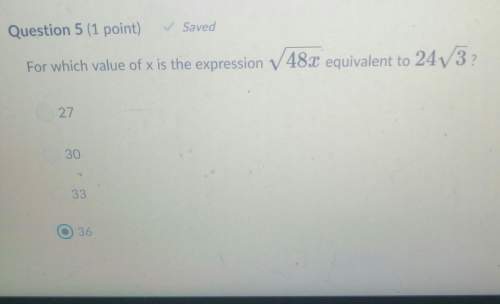
Mathematics, 05.05.2021 17:50 emojilover8188
A researcher would like to estimate p, the proportion of U. S. adults who support recognizing civil unions between gay or lesbian couples.
If the researcher would like to be 95% sure that the obtained sample proportion would be within 1.5% of p (the proportion in the entire population of U. S. adults), what sample size should be used?
(a) 17,778
(b) 4,445
(c) 1,112
(d) 67
(e) 45
Due to a limited budget, the researcher obtained opinions from a random sample of only 2,222 U. S. adults. With this sample size, the researcher can be 95% confident that the obtained sample proportion will differ from the true proportion (p) by no more than (answers are rounded):
(a) .04%
(b) .75%
(c) 2.1%
(d) 3%
(e) There is no way to figure this out without knowing the actual sample proportion that was obtained.

Answers: 1
Another question on Mathematics

Mathematics, 21.06.2019 15:20
Which is the equation of an ellipse with directrices at x = ±4 and foci at (2, 0) and (−2, 0)?
Answers: 3


Mathematics, 21.06.2019 20:10
Which value of m will create a system of parallel lines with no solution? y= mx - 6 8x - 4y = 12
Answers: 1

Mathematics, 21.06.2019 23:30
Which of the following exponential functions goes through the points (1, 6) and (2, 12)? f(x) = 3(2)x f(x) = 2(3)x f(x) = 3(2)−x f(x) = 2(3)−x
Answers: 1
You know the right answer?
A researcher would like to estimate p, the proportion of U. S. adults who support recognizing civil...
Questions

Mathematics, 05.05.2020 12:06



History, 05.05.2020 12:06

Mathematics, 05.05.2020 12:06

History, 05.05.2020 12:06






Mathematics, 05.05.2020 12:06



Mathematics, 05.05.2020 12:06


Mathematics, 05.05.2020 12:06







